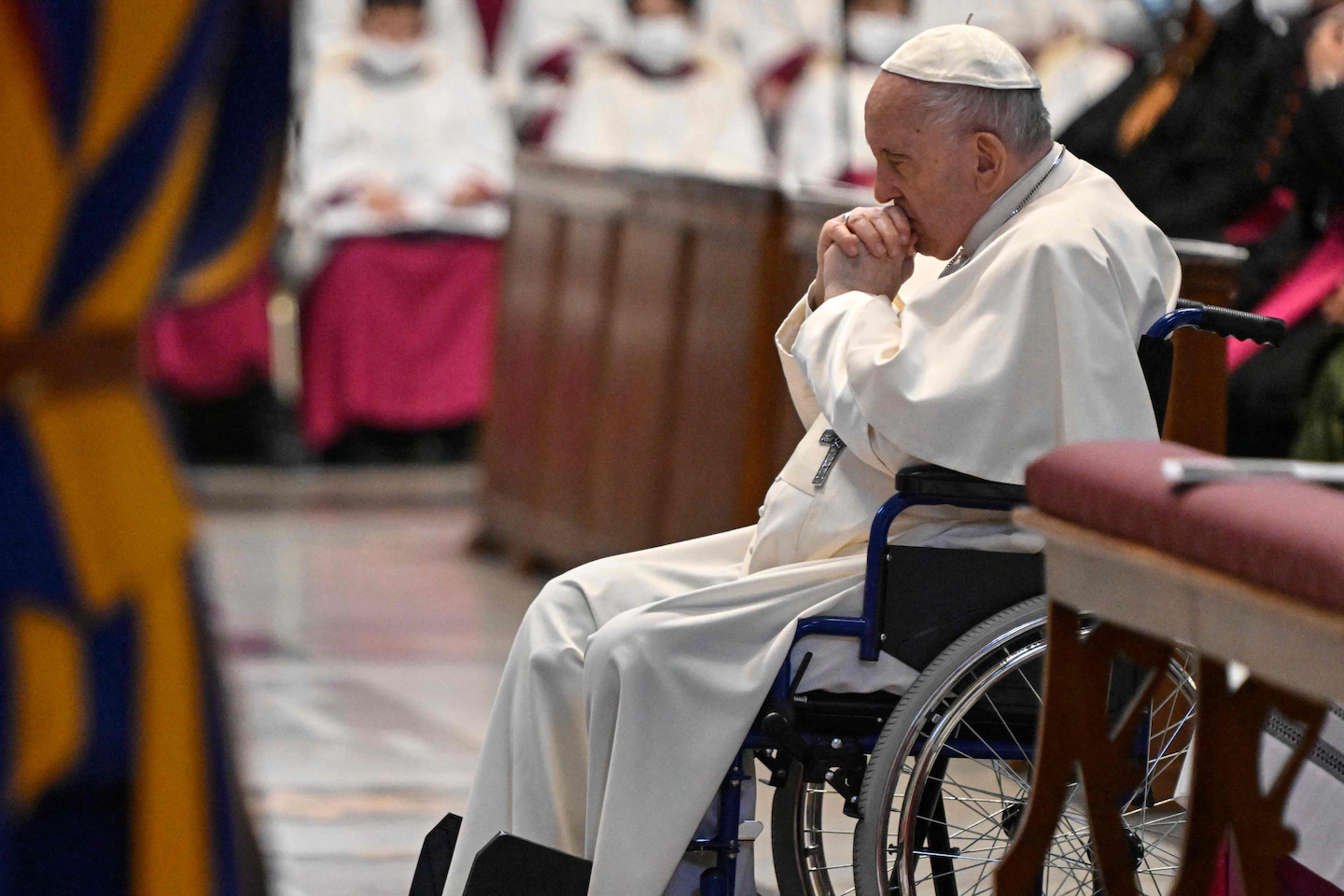Is 85-year-old Francis — recently seen in a wheelchair and nearing the culmination of some important projects — indicating his intention to take the Benedict retirement option? Might there soon be three popes bumping around the Vatican kitchen at midnight in search of warm milk?
There are some holes in this theory. Benedict did not retire until four years after his visit to L’Aquila. And Francis, despite recent health challenges, seems as mentally sharp, humorous and ambitious as ever. A bum leg does not keep one from pope-ing. And it would be hard to imagine Francis contributing to the confusion of authority inherent in the existence of three popes, each tempted to pontificate. Francis’s close ally, Cardinal Óscar Andrés Rodríguez Maradiaga, dismisses the retirement rumors as “fake news” and “a cheap soap opera.”
In fairness, however, the pope does seem to be feeling his age. “When you are old, you are no longer in control of your body,” Francis said during a general audience this month. “The vigor of the body fails and abandons us, even though our heart does not stop yearning.”
Only Francis knows the limits of his body. But it is evident how his yearnings are focused:
First, Pope Francis is pushing for greater liturgical uniformity within the boundaries of the Second Vatican Council. His conservative predecessor made it easy for traditionalist Catholics to use the earlier, Latin liturgy. Under Benedict, priests did not even need permission from their bishop. But for some, this is not merely the embrace of a more formal mode of worship. It has come to symbolize a parallel form of Catholicism that rejects the modernizing reforms of Vatican II (including the vernacular mass).
Last July, Francis issued a papal statement — Traditionis Custodes — that calls on all Catholics to accept the reformed Roman Rite, reestablishes the role of bishops in granting (minimal) exceptions, reaffirms the guiding role of the Holy Spirit in Vatican II and reasserts the authority of the pope to maintain a united church.
Second, Francis — the first pope from South America — has taken another large step in making the geographical “peripheries” of the church more central to its governing and mission. Francis recently announced the creation of 16 new voting-age cardinals. When they attend the consistory, or formal meeting, of the College of Cardinals in late August, 41 voting-age cardinals will come from Asia, India, Africa and Oceania, nearly double the 22 in the 2013 conclave that elected Francis.
Third, Pope Francis continues to tame the often sclerotic, sometimes corrupt Vatican bureaucracy (a.k.a. the Roman Curia). Two days after the August consistory, the pope will reconvene the cardinals to discuss the new Vatican constitution, which took effect on June 5. Its overarching purpose is to “make the Vatican less self-referential” by focusing it on evangelism and the needs of dioceses around the world. It includes provisions that would rename and merge some Vatican departments, ensure that women can head those divisions and impose term limits on Vatican employees.
Fourth, Francis is continuing his slow exposure of the Catholic Church to some of the better aspects and instincts of modernity, including the marriage of priests, an expanded role for women and a warmer welcome of LGBTQ Christians. This pope’s method is to raise such matters without pushing for dramatic doctrinal revisions that might lead to schism. Sometimes that both disappoints supporters and enrages critics. But Francis manages to move difficult debates forward through potent symbolism.
Consider the handwritten letter he sent last year to the Rev. James Martin, a Jesuit priest who — in the aftermath of the mass shooting in 2016 at the Pulse nightclub in Orlando — began a powerful outreach ministry to LGBTQ Catholics. “I want to thank you for your pastoral zeal and your ability to be close to people, with the closeness Jesus had, and which reflects the closeness of God,” wrote Francis.
In America — where culture wars have invaded and corrupted the Kingdom of God — Francis is sometimes dismissed as a liberal. This represents a fundamental misunderstanding of politics and faith. In Christianity, the means of change is not the triumph of ideology or the spread of dogma; it is to be close to people with the closeness Jesus had. From that mission, let’s hope Francis never retires.
